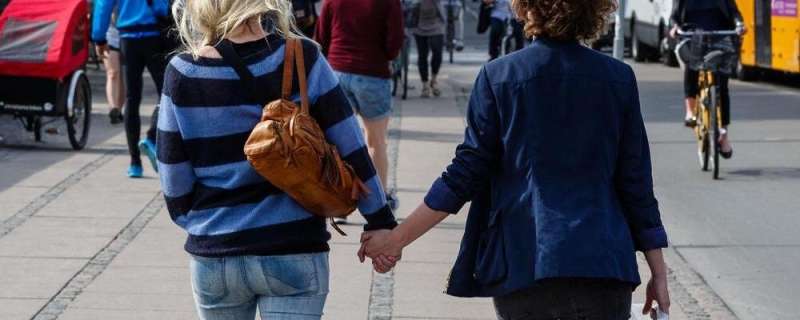The report "Health, well-being and life conditions of young LGBTI persons in the Nordic countries" describes the current state of research, and presents a number of efforts intended to improve the life conditions of this group. Credit: Yadid Levy/norden.org
Despite the fact that life conditions of LGBTI persons in the Nordic countries have changed in the last 70 years, major public health surveys indicate that this group suffers from an increased amount of mental and physical health issues compared to the rest of the population. A new report, launched today by the Nordic Council of Ministers, describes the current state of research, and presents a number of efforts intended to improve the life conditions of this group.
The purpose of the report, "Health, Well-Being and Life Conditions of Young LGBTI Persons in the Nordic Countries," is to spread knowledge and experiences in the region, in order to contribute to better life conditions. The report consists of two parts:
- A research overview describing the current state of research regarding the well-being of young LGBTI persons in the Nordic countries, and
- A mapping, presenting a selection of efforts aimed to improve the well-being of young LGBTI persons in the Nordic countries.
Health impact factors
Studies that focus on mental health and experiences of, among other things, depression, anxiety, and stress, indicate that having a sexuality or gender identity which falls outside the norm seems to have a major impact on mental health. Trans persons in particular are reporting mental health issues exceeding the average.
"Studies show that it is also far more common among young LGBTI persons to experience self injury, suicidal thoughts and suicide attempts" says research overview author Anna Siverskog, Ph. D., and lecturer at the School of Health and Welfare at Jönköping University.
The LGBTI group also reports below-average physical health, in particular among trans persons. Multiple studies further indicate above-average drug and alcohol abuse in the LGBTI group. They also show how norms prevalent in sports contexts may affect which adolescents feel welcome there.
Norms and life conditions
Studies acknowledge that many young LGBTI persons are unable to be as candid as they would like, regarding their sexuality or gender identity. Sexual harassment and vulnerability to violence appear to be common. Trans persons in particular are subjected to offensive treatment, or to harassment. Such violence is rarely reported to the police. The report highlights, among other materials, studies with a focus on school, working life, growing up in rural areas, the importance of geography, and contexts where religion and conservative norms hold sway.
The report also addresses factors that create difference within the LGBTI group. For example, young bisexuals frequently display somewhat less well-being compared to young homosexuals. Differences between homo- and bisexual girls and boys can also be observed across multiple studies.
Needs and measures
A recurring model of explanation in the studies reviewed is that the difficulties experienced by young LGBTI persons in daily life revolve around what is known as minority stress. This is a concept used to describe a minority position which involves an increased risk of exposure to various psychosocial stressors (such as coping with bullying, discrimination, and violence). With this in mind, awareness-raising efforts are in focus when the studies propose any recommendations.
Efforts made in the Nordic countries
The mapping of efforts includes measures taken at municipal, regional and national levels, in many different areas throughout the Nordic countries. The efforts are targeting young people directly, as well as a number of professions with which they interact, such as school and healthcare staff. Other efforts may involve raising awareness about the situation of young LGBTI persons, and tasking key authorities with awarding the group a particular focus.
It is mainly the LGBTI organizations of the respective nations who serve as the primary actors behind the efforts aimed directly at the target group. Other actors can be found among recreation leaders and social welfare secretaries operating locally, in a municipality or region. Collaboration frequently occurs between organizations and occupational groups. LGBTI organizations tend to function as repositories of knowledge, and provide professionals with education and in-service training covering issues pertaining to the health and life conditions of young LGBTI persons.
Launch of the report during World Pride
Since 2019, LGBTI issues have been an area of political co-operation in the Nordic Region, and in 2020 the Nordic Council of Ministers adopted the world's first regional LGBTI strategy.
The report Health, well-being and life conditions of young LGBTI persons in the Nordic countries is produced by NIKK, Nordic Information on Gender, on behalf of the Nordic Council of Ministers. NIKK is based at the Swedish secretariat for Gender Research, University of Gothenburg. The report is launched today, 16 August, during the World Pride panel debate "Nordic ministers gather forces for young LGBTI people's wellbeing."
More information: The report is available online: www.gu.se/sites/default/files/ … nordic-countries.pdf
Provided by University of Gothenburg






















